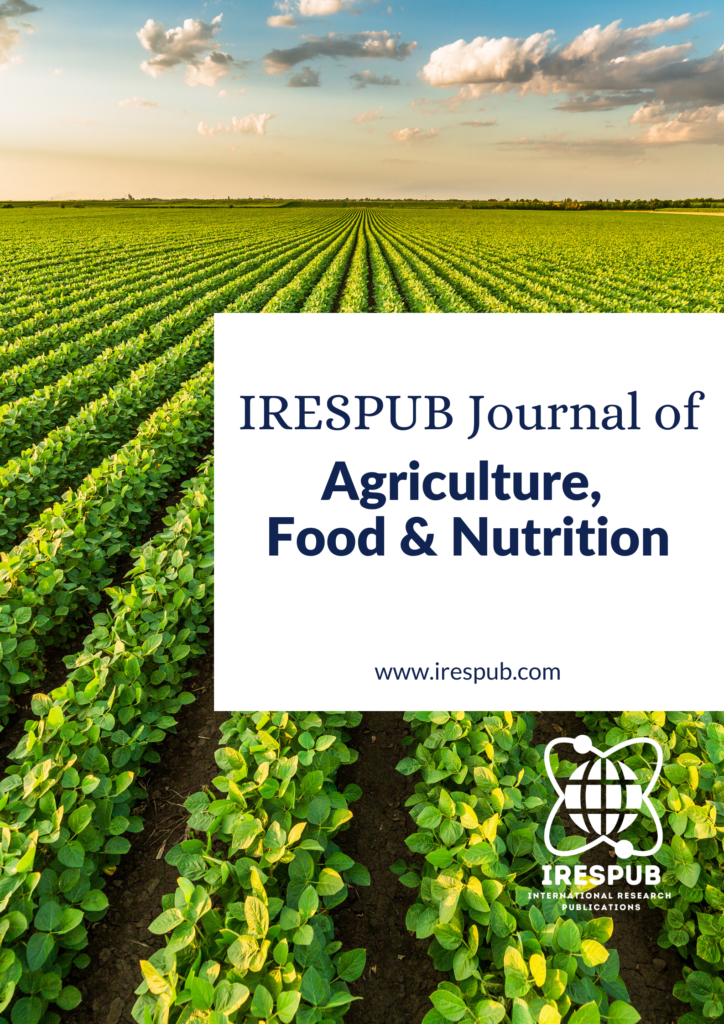Home > Journals > IRESPUB Journal of Agriculture, Food & Nutrition > Volume 2 Issue 3 > Assessment of irrigation water quality parametric indices of lake Gwakra, Gerie local government, Adamawa state, Nigeria

Year Launched: 2021
Journal Menu
- Scope & Research Areas
- Instructions for Authors
- Article Processing Charge
Journal List
- Natural & Applied Sciences
- Life Sciences
- Business Management
- Education & Literature
- Humanities & Cultural Studies
- Medical & Dental Sciences
- Engineering & Computer Sciences
- Agriculture, Food & Nutrition
- Environmental & Material Sciences
- Wellness & Lifestyle Management
- Arts & Ideas
- Law, Policy & Religion
Assessment of irrigation water quality parametric indices of lake Gwakra, Gerie local government, Adamawa state, Nigeria
Volume 2, Issue 3, Nov-Dec 2022 | Page 1-12 | PDF (460K) | Pub. Date: December 14, 2022
Author(s)
Yohanna Peter1*, Ezekiel Yonnana1, Ibrahim Saidu1, and Ibrahim Birma Bwatanglang2; Department of Geography Adamawa State University, Mubi. Adamawa State, Nigeria; Department of Pure and Applied Chemistry, Adamawa State University, Mubi. Adamawa State, Nigeria
Abstract
The quality of water for irrigation is vital to productivity and quality of crops produced. In this paper, the water quality of Lake Gwakra for irrigation purpose have been assessed using the Arithmetic Mean Water Quality Index Method. The lake water samples during the irrigation period (January, February and March) of the dry season were collected using standard procedures. The samples were subjected to appropriate physicochemical analyses. Properties such as pH, EC, TD and DO were determined in-situ using the multi-probes meter. Concentrations of chemical properties (Na, K, Mg, Ca, Cl–, SO42-, CO32 –) were tested in the laboratory using the Atomic Absorption Spectrophotometer (AAS) machine. The important parametric indices that influence the quality of water for irrigation such as Permeability Index (PI), Sodium Percentage, (Na%) Residual Sodium Carbonate (RSC), Magnesium Hazard (MH), Kelly’s Ratio (KR), Total Hardness (TH) and Potential Salinity (PS) were determined using appropriate mathematical formulae. The results showed that the physicochemical parameters were within the permissible limits for irrigation purpose as provided by WHO. Permeability Index (47%), Sodium Percentage (40.56%), Residual Sodium Carbonate(0.90Meq/l), Magnesium Hazard (43.69%), Kelly’s Ratio (0.47 Meq/), Total Hardness (43.72 Meq/) and Potential Salinity (4.19 Meq/) were all within the safe limits for irrigation. Controlled use of agrochemicals in the Jibiro Watershed and the lake vicinity was recommended towards preservation of the lake’s water quality for irrigation and other uses.
Keywords
lake gwakra; irrigation; physicochemical parameters; permissible limits
Cite this paper
Peter, Y., Yonnana, E., Saidu, I., Bwatanglang, I. B. (2022), Assessment of irrigation water quality parametric indices of lake Gwakra, Gerie local government, Adamawa state, Nigeria, IRESPUB Journal of Agriculture, Food & Nutrition. Volume 2, Issue 3, Nov-Dec 2022, Page 1-12
References
[1] Adegbola, G. A, Soyewo, L. T., Odey, B. O., Ajani, A. B. (2021). River water quality assessment and its suitability for irrigation purpose. FUDMA Journal of Sciences (FJS) Vol. 5 No. 3, pp 413 – 419
[2] Adegbola Gbolagade Adeyemi, Dauda Muhammed and Aluko Timothy Oludare (2019)Assessment of the suitability of water quality for irrigation in Ogbomoso, Oyo State GSC Biological and Pharmaceutical Sciences, 09(02), 021–031
[3] Almuktar S, Abed, S. N., Scholz, M. (2018). Wetlands for wastewater treatment and subsequent recycling of treated effluent: A review Environmental Science and Pollution Research https://doi.org/10.1007/s11356-018-2629-3
[4] Al-Ruwaih, F.M., Shafiullah, G.,(2017).Geochemical Processes and Assessment of Water Quality for Irrigation of Al-Shagaya Field-C,Kuwait. International Journal of Environment, Agriculture and Biotechnology Vol-2, 1.
[5] Al-Shammiri, M. A., Al-Saffar B., S. and Ahmed M. (2005): Waste Water Quality and Reuse In Irrigation in Kuwait Using Microfiltration Technology in Treatment Desalination; 185, 213- 225
[6] APHA (2005). Standard methods for the examination of water and waste water, 21st edn. American Public Health Association, Washington, DC.
[7] Areola, O. O. (1983). Soils and Vegetal Resources. In J.S. Oguntoyinbo, O. O. Areola, & M. Falani, (eds). A Geography of Nigerian Development. (2nd edition). Ibadan; Heinemann Educational Books Ltd.
[8] Bauder, T.A., Waskom, R.M., Sutherland, P. and Davis, J.D. (2011). Irrigation Water Quality Criteria Crop Series Irrigation module. Fact Sheet No. 0.506. Colorado State University, Extension, US
[9] Bawden, M. G. & Tuley, P. (1966). The Resource of Southern Sardauna and Southern Adamawa Provinces, Northern Nigeria: Land resource Study No. 2. Land Resources Division/Overseas Development.
[10] Belkhiri L, Mouni L, Narany TS, Tiri A. (2017). Evaluation of potential health risk of heavymetals in groundwater using the integration of indicator kriging and multivariate statistical methods. Groundwater for Sustainable Development. 4:12-22
[11] Bwatanglang, I. B. (2019). Assessment of Heavy Metal Pollution in Farmland Soils and Potential Health Risk to Farmers in Mubi, Adamawa State (Nigeria) ADSUJSR, 7(1):25-36, April
[12] Bwatanglang et al Appraisal of Public Pipe-borne Water Quality in Jimeta/Yola Adamawa State (Nigeria): From the Treatment-plants to End-user Points
[13] Bwatanglang, I.B., Magili, S.T. and Daniel, Y.Z. (2018). Evaluation of Soil Vital Chemistry of Selected Community Farmlands within and Around Mubi Province, Adamawa State. Journal of Environmental Sciences and Resources Management Volume 10, Number 3, 2018
[14] Das, S.; Nag, S., (2015). Deciphering groundwater quality for irrigation and domestic purposes–a case study in Suri I and II blocks, Birbhum District, West Bengal, J. Earth Syst. Sci., 124, 965–992.
[15] Demetriades, A. (2011): Understanding Quality of Chemical Data from the Urban Environment. Mapping the Chemical Environment of Urban Areas. Chichester: Wiley Blackwell; pp.77-98
[16] Doneen, L.D. (1964). Notes on Water Quality in Agriculture; Department of Water Science and Engineering, University of California: Oakland, CA, USA
[17] Durfor, C.N., Becker, E., (1962). Public Water Supplies of the 100 Largest Cities in the United States,; US Government Printing Office: Boston, MA, USA, 1964.
[18] Eaton, F.M., (1950). Significance of carbonates in irrigation waters(SW-Turkey). Total Environ., 584, 131–144.
[19] El-Amier, Y.A.; Kotb, W.K.; Bonanomi, G.; Fakhry, H.; Marraiki, N.A.; Abd-ElGawad, A.M. (2021). Hydrochemical Assessment of the Irrigation Water Quality of the El-Salam Canal, Egypt. Water, 13, 2428. https://doi.org/10.3390/ w13172428 Academic Editors: Thomas
[20] Falowo, O. O., Akindureni, Y. and Ojo, O. (2017): Irrigation and Drinking Water Quality Index Determination for Groundwater Quality Evaluation in Akoko Northwest and Northeast Areas of Ondo State, Southwestern Nigeria. American Journal of Water Science and Engineering 3, 50–60.
[21] Falowo, O. O., Ojo, O. O. (2020). Assessment of Water Quality Index and Irrigation Indices in Ese Odo Area of Ondo State, Southwestern Nigerian. International Annals of science 9, 1, pp. 174-187, 2020
[22]Fipps, G., (2003). IrrigationWater Quality Standards and Salinity Management Strategies Available online: https://hdl.handle. net/1969.1/87829 (accessed on 9 April 2022).
[23] Irfan, M., M. Arshad, A. Shakoor and L. Anjum (2014). Impact of irrigation management practices and water quality on maize production and water use efficiency. Anim. Plant Sci., 24:1518-1524.
[24] Islam, M. S. and Shamsad, S. Z. K. M. (2009). Assessment Of Irrigation Water Quality Of Bogra District In Bangladesh Bangladesh J. Agril. Res. 34(4) : 597-608, December
[25] Kaushal, M.P. (2009) Groundwater Recharge Technologies. Journal of Crop Improvement, 23, 83-93. http://dx.doi.org/10.1080/15427520802418350
[26] Kelly, W., (1940). Permissible composition and concentration of irrigated waters. In Proceedings of the American Society of Civil Engineers, Reston, VA, USA, Volume 66, pp. 607–613.
[27] Kelly, W. P. (1963). Use of saline irrigation water. Soil Science. 95:355-439
[28] Khodapanah L., Sulaiman W.N. and Khodapanah, D. N. (2009): Groundwater Quality Assessment for Different Purposes in Eshtehard District, Tehran, Iran. European Journal of Scientific Research 4, 543–553.
[29] Khudair, B. H. (2013): Assessment of Water Quality Index and Water Suitability of the Tigris River for Drinking
[30] Malakar, A., Singh, R., Weber, K., Westrop, J., Elofson, C., Kumar, M., and Snow, D. (2021). Occurrence of arsenite in surface and groundwater associated with a perennial stream located in Western Nebraska, USA. Journal of Hazardous Materials Vol – 416.
[31] Matthess, G. (1982). The Properties of Ground Water, John Wiley and Sons, New York, USA. p. 397.
[32]Mehari, M., Mulu, B. (2013). Distribution of trace metals in two commercially important fish species (Tilapia Zilli and Oreochromis Niloticus) Sediment and Water from Lake Gudbahri, Eastern Tigray of Northen Ethiopia, J. Sci. Res. Publ. 3 2250–3153.
[33]Michael, A. M. (1992). Irrigation Theory and Practices. Vikash Publishing House Pvt. Ltd., New Delhi, India. pp. 686- 740.
[34] Naresh, G. S. (2021). Assessment of Lake Water Quality by using Trophic State Index Indicators Parameters for Ecological Lake Restoration- a Case Study of Naukuchiatal, Kumoun Region, Uttrakhand, India. International Journal of Multidisciplinary and Current Educational Research (IJMCER) Vol. 3. 101-122
[35] Neilson, R., Roberts, D.M., Loads K.W., Lozana, A., David T.S. (2018). Healthy soil for crop production. The Dundee conference on crop production in Northern Britain, 2018. Dundee, UK, 17-20.
[36] Oster, J. D., Sposito, G. and Smith, C. J. (2016): Accounting for Potassium and Magnesium in Irrigation Water Quality Assessment. California Agriculture 70, 71–76.
[37] Paliwal, K., (1972). Irrigation with Saline Water; IARI: New Delhi, India, Volume 198
[38] Paramaguru N., Anandhan P., Chidambaram S., Ganesh N, Nepolian M., Devaraj N., Vasudevan U., Gantayat R. R. and Pradeep K. (2016)., “Appraisal of Groundwater Quality in the Cuddalore District of TN, India,” International Research Journal of Earth Sciences, Vol. 4(6), 23-30.
[39] Park, D.M.; White, S.A.; McCarty, L.B.; Menchyk, N.A. Interpreting Irrigation Water Quality Reports; CU-14-700; Clemson University Cooperative Extension: Clemson, SC, USA, 2014
[40] Raghunath, HM. (1987). Groundwater. 2nd New Delhi: Wiley Eastern Ltd;.563 p
[41] Rebecca, J. L. (2018). Applications of Microbial Processes in Geotechnical Engineering Grainne El Mountassir, in Advances in Applied Microbiology, 2018
[42] Richards, L.A., (1954). Diagnosis and Improvement of Saline and Alkali Soils; United State Department of Agriculture: Washington, DC, USA, Volume 78.
[43] Rinke, K., Kuehn, B., Bocaniov, S., Wendt-Potthoff, K., Buettner, O., Tittel, J., Schultze, M., Herzsprung, P., Roenicke, H., Rink, K., et al (2013). Reservoirs as sentinels of catchments: The rappbode reservoir observatory (Harz Mountains, Germany). Earth Sci. 69, 523–536.
[44] Salifu, M., Aidoo, F., Saah, M. and Dickson, H. (2017): Evaluating the Suitability of Groundwater for Irrigational Purposes in Some Selected Districts of the Upper West Region of Ghana. Applied Water Science, 653–662
[45] Shakoor, A. (2015). Hydrogeologic assessment of spatio-temporal variation in groundwater quality and its impact on agricultural productivity. PhD Thesis, Department of Irrigation and Drainage, University of Agriculture, Faisalabad.
[46] Smitha ,C.J., Osterb, J.D., Sposito, Potassium and magnesium in irrigation water quality assessment. Agric. Water Manage. (2014), http://dx.doi.org/10.1016/j.agwat.2014.09.003
[47] Szaboles, I. and Darab, C., in Proceedings of 8th International Congress of ISSS, Trans, II (Vienna, 1964), pp. 803–812.
[48] Taiwo, A. M. (2016): Pollution Sources of Groundwater Quality in the Basement Rocks in Oyo State Nigeria Using Multivariate Statistics. Fresenius Environmental Bulletin 25, 2284–2291.
[49] Tank, S.K. Chippa, R.C. (2013): Analysis of water quality of Halena Block in Bharatpur Area, J. Sci. Res. Publ. 3 (3).
[50] Tiri, A., Belkhiri, l., Asma, m. and Mouni, L.(2019). Suitability and Assessment of Surface Water for Irrigation Purpose. DOI: http://dx.doi.org/10.5772/intechopen.86651
[51] Usman, B. H. (2005). The soils of Adamawa State, North Eastern Nigeria. In E. C Igwe, S. I. Mshelia & M. Y. Jada, (eds). Agriculture in Adamawa State. Yola; Paraclete Publishers. 62-83.
[52] Xu, P.; Feng,W.; Qian, H.; Zhang, Q. Hydrogeochemical (2019). Characterization and Irrigation Quality Assessment of Shallow Groundwater in the Central-Western Guanzhong Basin, China. J. Environ. Res. Public Health 16, 1492
[53] Wilcox, L. (1955). Classification and Use of Irrigation Waters; United State Department of Agriculture: Washington, DC, USA.
[54] Yonnana, E., Hyellamada, J.S. Land use Impacts on Hydrogeomorphology of Lakes in the Upper Benue Valley Area of Adamawa State, Nigeria (2016). International Journal of Research in Geography (IJRG) Volume 2, PP 26-33
[55] Yonnana, E, Kaigamma, I. and Jacob, J. V. (2015). Assessment of Water Quality for Human Consumption from selected lakes in the Upper Benue Valley of Adamawa State, Northeastern Nigeria. Continental J. Environmental Sciences 9 (2): 12 – 21, 2015

